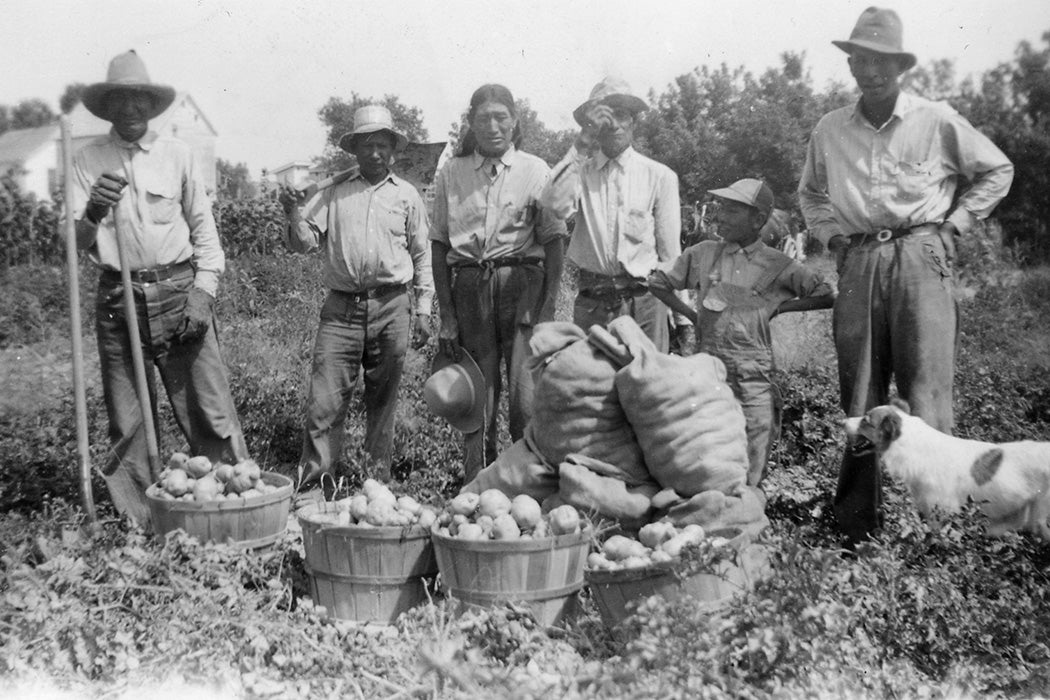Many people have heard of Jim Crow segregation and the disenfranchisement of Black voters, particularly in the American South. But other instances of voter suppression in our nation’s history are much less well known. One example is the suppression of Native American voters in the United States.
The majority of Native Americans weren’t even citizens until 1924, when the Indian Citizenship Act was signed into law. The Fourteenth Amendment to the U.S. Constitution (1868) granted citizenship to persons “born or naturalized in the United States.” But these persons had to be “subject to the jurisdiction thereof.” This clause was interpreted throughout the rest of that century to exclude Native Americans subject to the jurisdiction of tribal lands. The amendment also excluded “Indians not taxed” from citizenship (as had the Civil Rights Act of 1866). Further court cases and acts of Congress reaffirmed this until 1924.
But as political scientists Jean Schroedel and Artour Asianian find, South Dakota was called “the Mississippi of the North” for its rigorous suppression of Native American voters long after 1924.
“Native Americans were statutorily excluded from voting and holding office anywhere in the state until the 1940s,” Schroedel and Asianian write, adding that the state kept residents of three counties from voting till the mid-1970s, and even “from serving in some elected offices until 1980.”
Just under 9 percent of South Dakota’s population is Native American, one of the highest percentages in the nation. While many of South Dakota’s sixty-six counties are nearly all white, there are nine counties with a majority Native American population. Two of them, Todd and Shannon, are about 90 percent Native American. Between 1976 and 2002, they “adopted more than 600 regulations and laws overseeing elections.”
These two counties were included in the 1975 amendments to the Voting Rights Act of 1965. The amendments extended voting rights protections beyond the South. One of these protections was the pre-clearance process: jurisdictions with a history of racially motivated voter suppression were supposed to get advance clearance for voting laws from the Department of Justice. But the Supreme Court’s conservative majority ended the pre-clearance process in Shelby County v. Holder in 2013.
Schroedel and Asianian write that “the hostility towards the Voting Rights Act among elected officials in South Dakota far surpassed that of officials in other states with substantial Native populations.” In 1975, the Republican attorney general, William Janklow, later governor of the state, “called for the immediate repeal of the Voting Rights Act.” Schroedel and Asianian describe him “using language first used by Southern racists, who labeled the Act as an unconstitutional infringement on states’ rights.”
“Although the Voting Rights Act has increased opportunities for Native Americans to be elected, this case study shows they are still massively under-represented. We are not able to find any records of a single Native American being elected to the state legislature or a county council prior to voting rights litigation in the 1980s…. [T]hirty years later, they continue to be a minuscule portion of elected officials in South Dakota.”
Weekly Digest
While the Supreme Court’s conservatives said in Shelby that racial discrimination in access to voting was a thing of the past, Schroedel and Asianian argue instead that “at every juncture, the dominant political power structure in [South Dakota] has sought to undermine the ability of Native Americans to be full participants in governance.”
Support JSTOR Daily! Join our new membership program on Patreon today.







